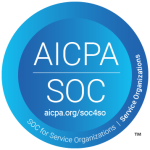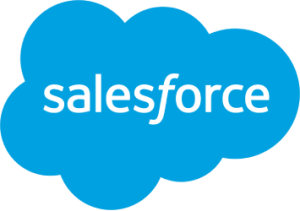Legal and compliance teams depend on reliable signatures that stand up during audits, disputes, and regulatory reviews. They also push every system they use to provide clear ownership and traceability. Because of that, Salesforce eSignature features must support more than a simple click to sign. Teams need a full picture of who signed, how they authenticated, where documents live, and how approvals move through Salesforce workflows.
Modern legal teams already live inside Salesforce for case, matter, or contract tracking. Compliance leaders monitor risk, track obligations, and document approvals in the same environment. When signatures sit outside Salesforce in scattered email threads or vendor portals, teams lose valuable visibility. They spend extra time chasing versions, validating authenticity, and proving that each step met policy.
A strong eSignature strategy inside Salesforce changes this picture. Signers follow guided steps, approvers receive clear notifications, and administrators see an accurate record of every change. Legal and compliance stakeholders gain the confidence to scale digital agreements instead of policing everyone’s manual habits.
Why Salesforce eSignature Features Matter for Legal Leaders
Legal and compliance stakeholders often carry personal responsibility for the integrity of records. If an agreement fails during a dispute, someone has to explain each gap. Strong Salesforce eSignature features give those leaders an environment they can trust.
With integrated signatures, every agreement ties directly to the right Salesforce record. Contract managers open an opportunity, a matter, or a case and see the full signature history alongside other activity. Compliance teams no longer stitch together PDFs, email logs, and vendor exports. They review one connected view inside the CRM.
This approach also supports internal policy enforcement. When legal teams create approval routes in Salesforce, they decide who signs first. They also determine the order and which exception rules are important. This way, lawyers and compliance analysts do not have to rebuild rules for each new deal or matter.
1. Strong Identity Verification and Authentication
Legal and compliance teams care deeply about signer identity. A simple typed name rarely satisfies policy. You need repeatable ways to prove that the right person signed.
Modern eSignature tools inside Salesforce support multiple layers of authentication. You can require email verification, two factor codes, or secure links tied to the recipient’s identity in Salesforce. For high-risk agreements, consider adding questions or identity documents. Do this before the signer reaches the signature page.
Because this validation occurs in a structured way, legal teams gain consistent evidence. When a question comes up, they can show how the signer got a secure link, passed the authentication, and finished the agreement. That record removes uncertainty and gives compliance stakeholders a clear story.
2. Detailed Audit Trails That Withstand Scrutiny
A strong audit trail turns a signature into an enforceable event. Legal teams rely on time stamped logs to demonstrate exactly what happened during each step. They want more than a final signed PDF. They want a clear sequence of actions.
Inside Salesforce, a good eSignature solution tracks when you sent the document. It also shows when each recipient viewed it, which device they used, and when they signed. It also tracks changes to the document version, signer details, and routing. That timeline then attaches directly to the related record, such as a case, contract, or opportunity.
During an audit, legal or compliance users can export this information without leaving Salesforce. They show regulators, auditors, or courts a precise trail instead of a collection of screenshots. This level of detail builds confidence and reduces risk during high pressure reviews.
3. Encryption and Secure Storage Aligned with Policy
Legal and compliance teams treat signed agreements as high value assets. These documents often include confidential information, sensitive clauses, or regulated data. Encryption and secure storage therefore move to the top of the feature list.
When signatures run inside Salesforce with a secure storage backend, organizations keep data within a controlled environment. Encryption at rest and in transit protects documents during storage and transfer. Role-based permissions in Salesforce limit access to authorized users. This helps teams avoid sharing sensitive agreements through uncontrolled file shares.
Compliance officers also benefit from clear data residency and retention policies. They can define where content lives, how long the system retains it, and which deletion policies apply. Combined with Salesforce sharing rules, this approach gives legal leaders a practical way to enforce company standards.
4. Flexible Multi-Party and Multi-Step Signing
Legal agreements rarely follow a simple one-to-one pattern. Many transactions require multiple signers across departments, companies, or regions. Some sequences need internal approvals before the external party signs. Others need parallel signing where several parties complete fields at similar times.
Effective eSignature tools inside Salesforce let you build these patterns without complex development. You can define routes such as internal review, external approval, or counter signature flows that match real legal processes. Each step updates the Salesforce record, so stakeholders see where the agreement sits at any moment.
This flexibility reduces confusion and shortens cycle times. Legal and compliance teams spend less energy managing email chains. They design the right route once and rely on automation to guide each signer through the proper sequence.
5. Rich Salesforce Native Tracking and Reporting
Legal and compliance users want real time insight into signature status. They ask questions like: Which contracts still wait for signatures? Which jurisdictions sign slower? Which business units hold the most unsigned agreements?
Salesforce native tracking gives teams the answers directly on their dashboards and reports. Signature status becomes another field on opportunities, cases, or custom objects. Users filter, group, and summarize agreements without exporting data to external tools.
This visibility supports better decisions. Compliance leaders can spot recurring bottlenecks, such as specific steps that always slow down approvals. Legal teams can monitor turnaround time and adjust clauses, templates, or routing when needed. Because every signature event lives in Salesforce, leaders measure performance with confidence.
6. Configurable Templates and Clauses that Match Legal Standards
Standardization helps legal teams reduce risk and speed up negotiations. When users work with uncontrolled documents, they may reuse outdated clauses or remove important language. Templates within eSignature tools limit those risks.
Inside Salesforce, you can link signature templates to specific record types, deal sizes, or regions. Each template carries approved clauses, signature blocks, and field mappings. When a user launches a signature request, they simply choose the template that fits the scenario. The system fills in names, dates, and key fields from Salesforce.
Legal and compliance teams still control the building blocks. They update clauses as regulations change and push refreshed templates into production without disrupting users. This balance between control and flexibility keeps the organization agile while protecting legal standards.
Core Salesforce eSignature Features for Compliance Control
At this point, legal and compliance leaders can see that signatures inside Salesforce offer more than speed. Core Salesforce eSignature features support stronger governance. Identity verification, audit trails, encryption, multi-party routing, native tracking, and templates all contribute to a controlled workflow.
Compliance officers can define policies based on these capabilities. For example, high risk agreements always require two-factor authentication and internal approval. Lower risk documents might use simpler flows. Because configuration lives in Salesforce, administrators can apply rules across regions and business units without custom code.
This foundation also helps organizations respond to new regulations. When standards evolve, teams adjust configurations instead of rebuilding entire processes. Legal experts focus on policy, while Salesforce administrators manage the technical details.
Configuring Salesforce eSignature Features for Your Organization
Every Salesforce environment looks different, and every legal team enforces its own rules. Strong Salesforce eSignature features give you room to design a model that fits your structure.
You can start by mapping your existing approval flows. Legal and compliance leaders list which roles sign each type of document and which exceptions apply. Salesforce admins then translate that map into fields, record types, and automation. The eSignature tool connects to that logic so each request follows the right route.
Next, teams configure security and audit requirements. They decide which documents require stronger authentication, which logs belong in reports, and how retention policies work. Because this configuration lives close to customer data, organizations keep documents, approvals, and policies in the same operational view.
Evaluating Vendors that Extend Salesforce eSignature Features
Most teams evaluate more than one solution before they standardize. During that process, legal and compliance leaders should check how vendors use Salesforce eSignature features. They should not treat signatures as a separate tool.
Good questions include: How deeply does the solution integrate with Salesforce objects and sharing rules? Can admins create new signature flows without development work? Does the product support encryption, detailed audit trails, and identity verification that match our policies?
You can also explore how the tool handles stored documents. A strong platform allows you to store agreements in a secure and scalable way. It also connects them directly to records. That combination supports both legal durability and operational performance.
How S-Drive Strengthens Signatures for Legal and Compliance Teams
S-Drive helps organizations extend eSignature workflows with Salesforce native document management. Legal and compliance teams handle all agreements in Salesforce. This keeps files organized and prevents users from scattering them across email, shared drives, and local folders.
With S-Drive, signed documents land in secure object storage while remaining visible on the related Salesforce records. Permission models stay aligned with Salesforce security. Users see only the agreements they should access. Legal teams gain a consistent structure for organizing matters, contracts, and compliance files with folder and hierarchy controls.
If your legal or compliance function supports service teams, you can look at the Case File Management and Work Orders use case on the S-Drive site for a practical example of how teams tie ongoing case work to signed documents.
Legal and compliance leaders face constant pressure to protect the organization while keeping business moving. Strong signature capabilities in Salesforce give them a practical way to achieve both goals. S-Drive provides secure storage and organized folders. It also works well with document workflows, making sure every agreement has a clear lifecycle.
Contact us or visit our AppExchange page to learn more about what S-Drive can do for you.



